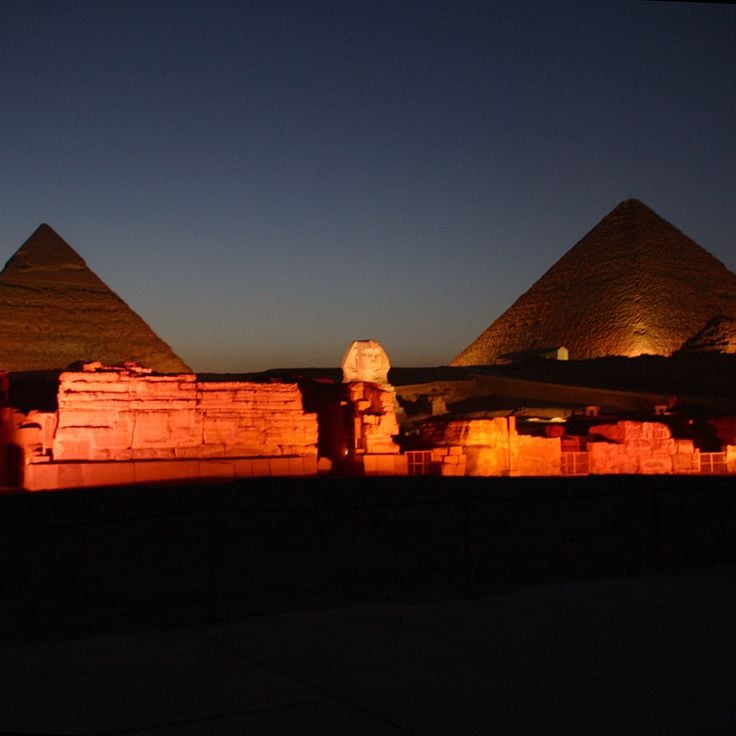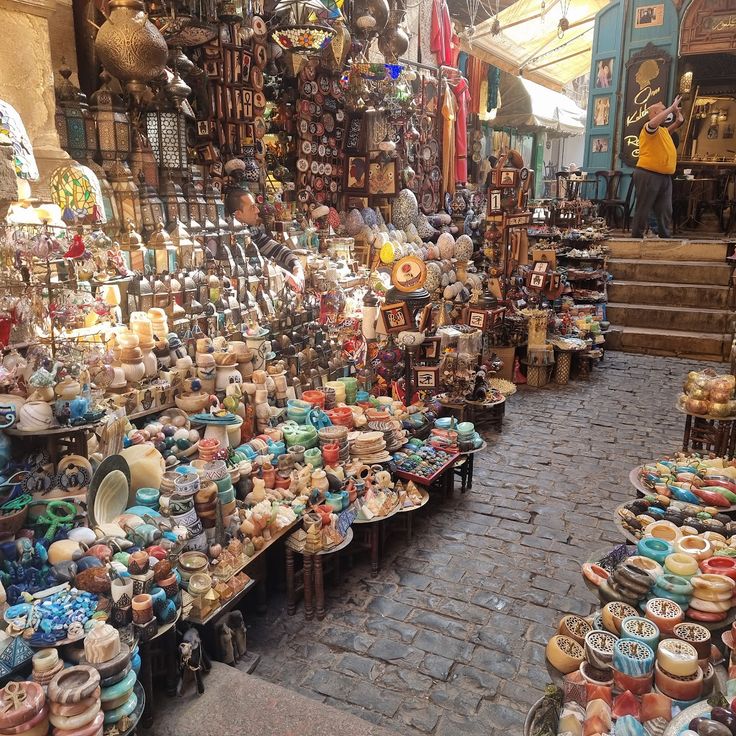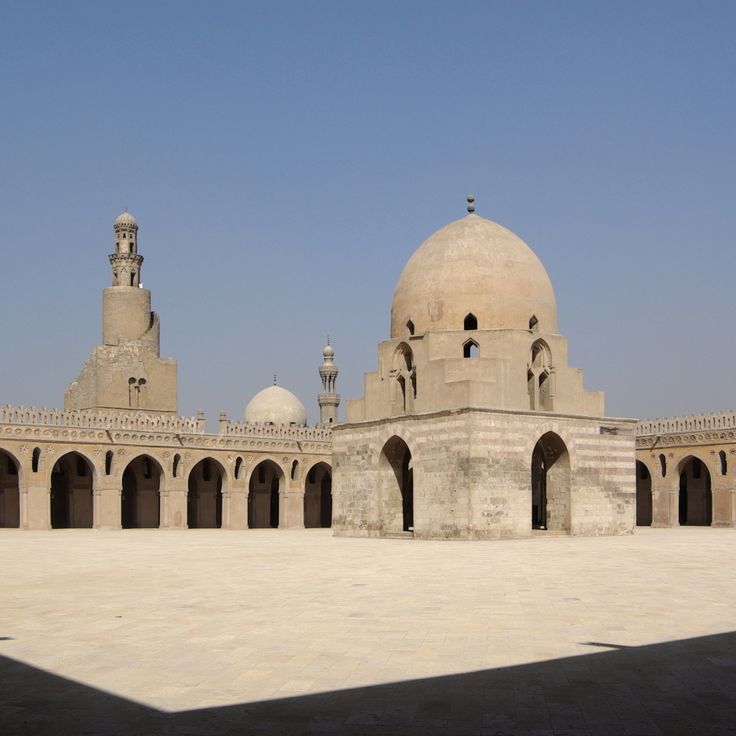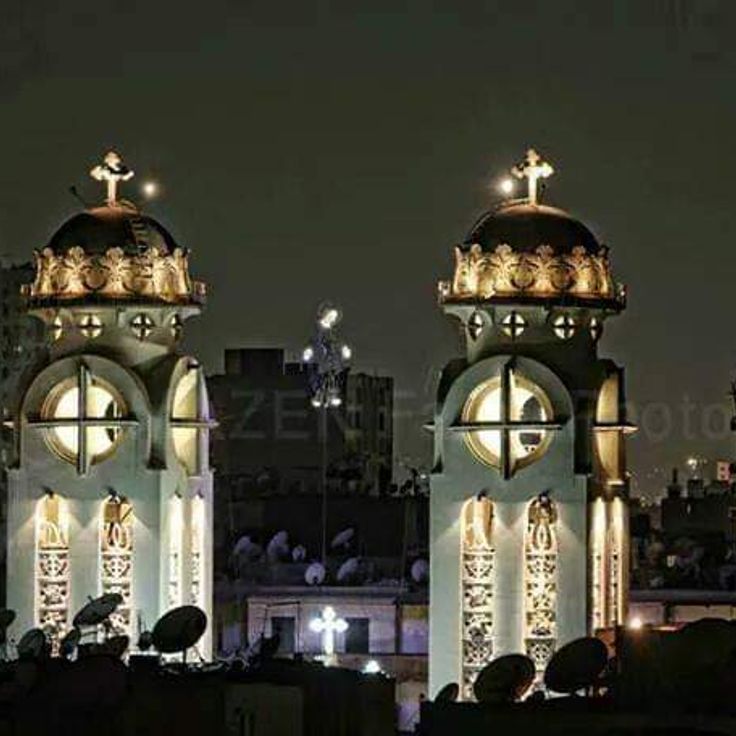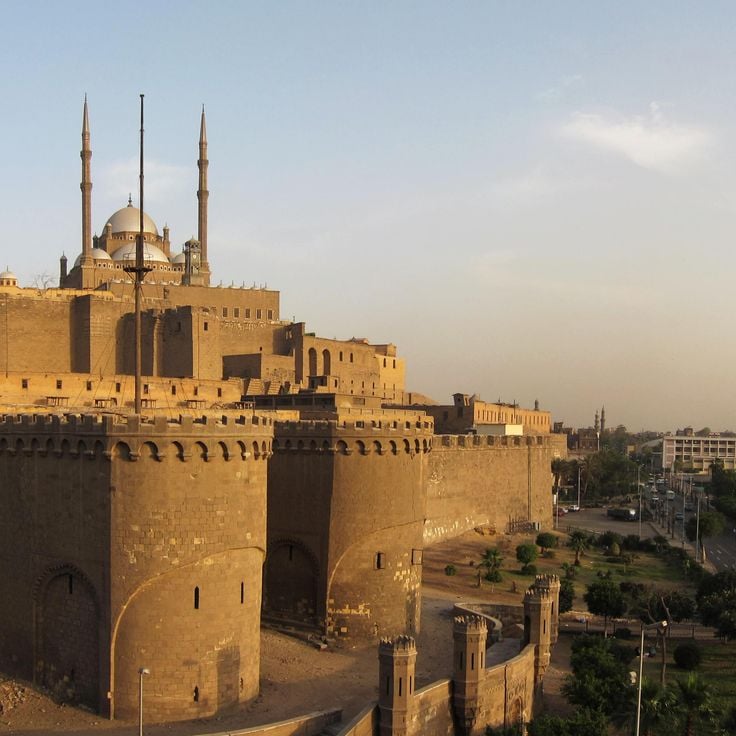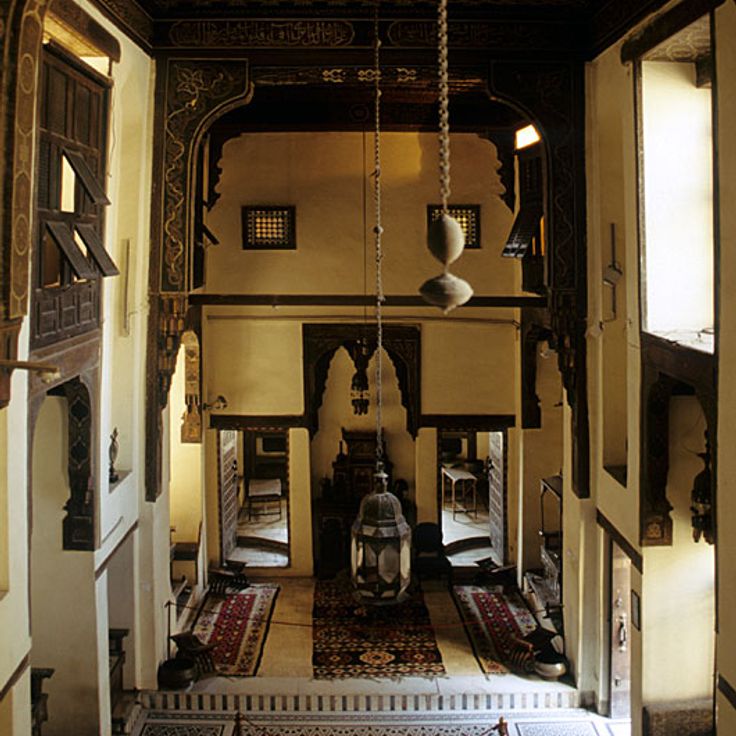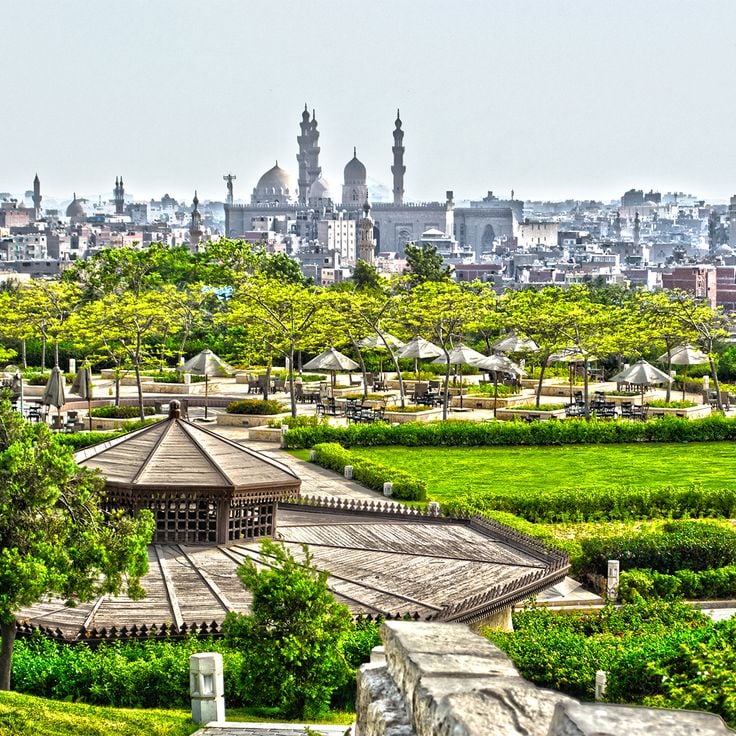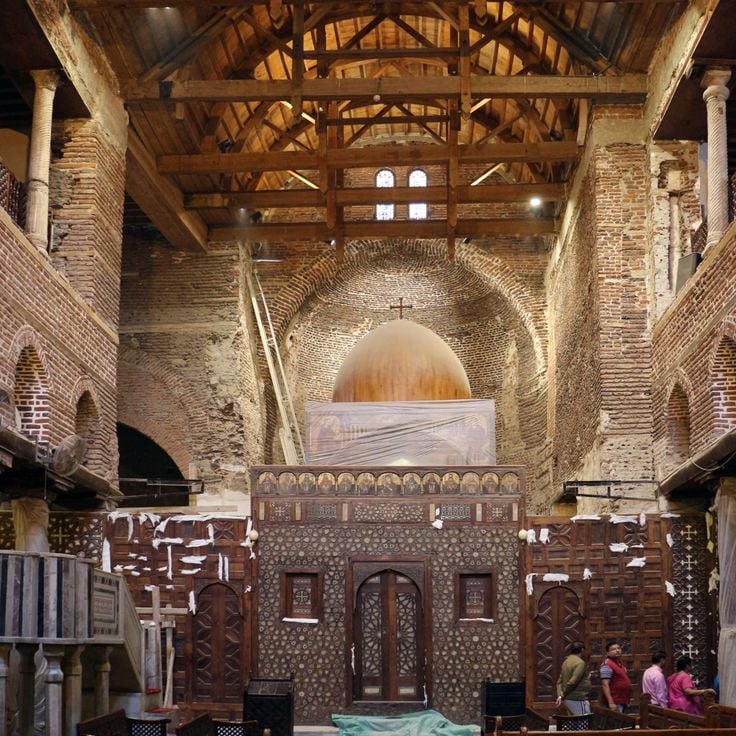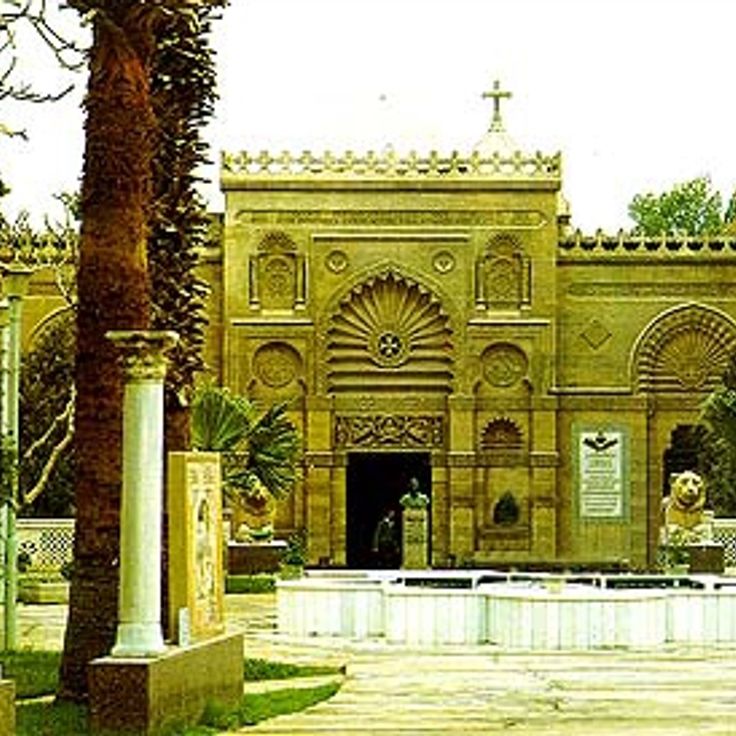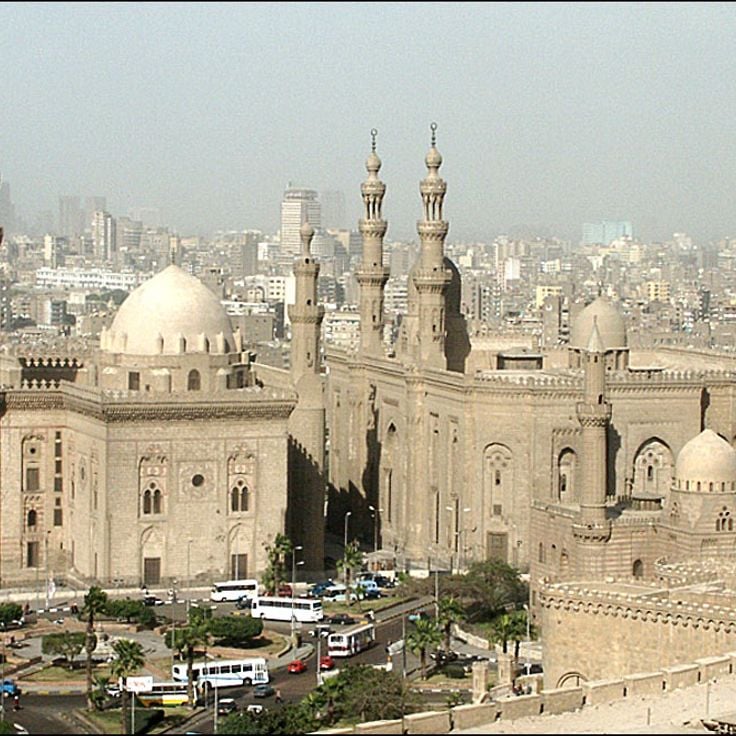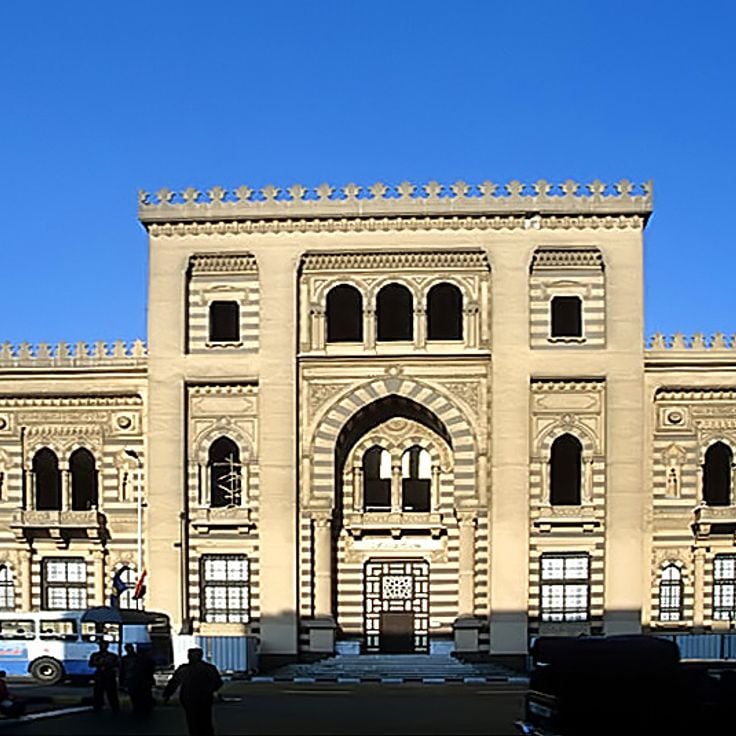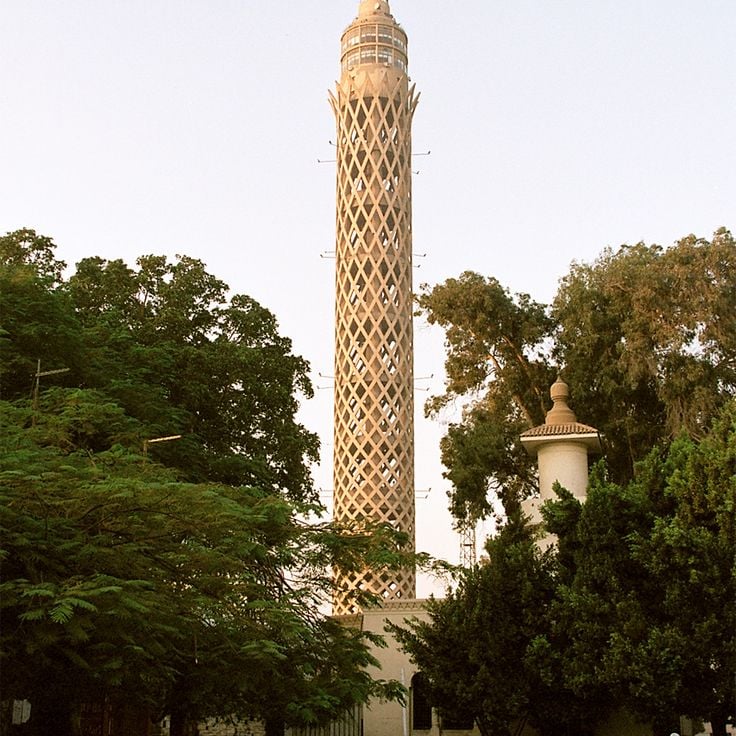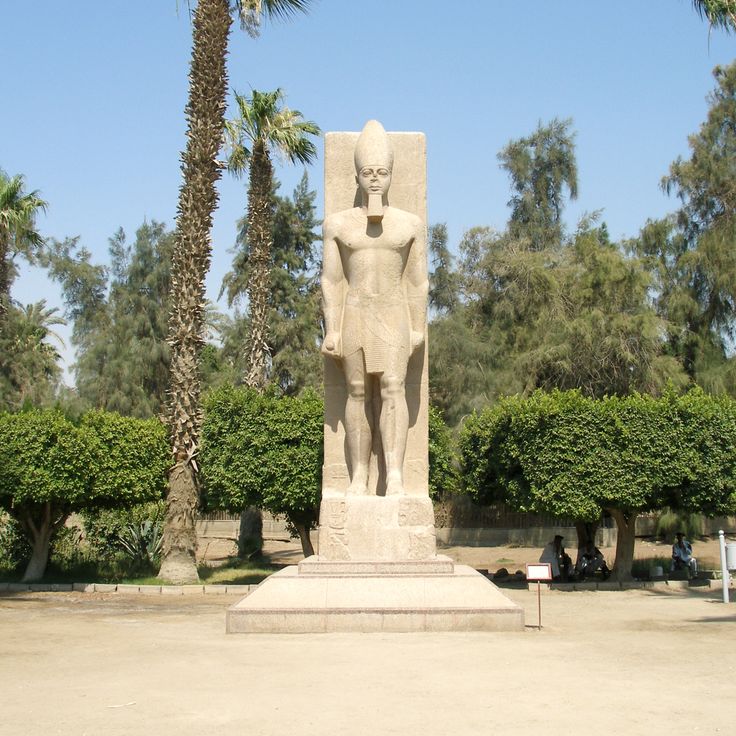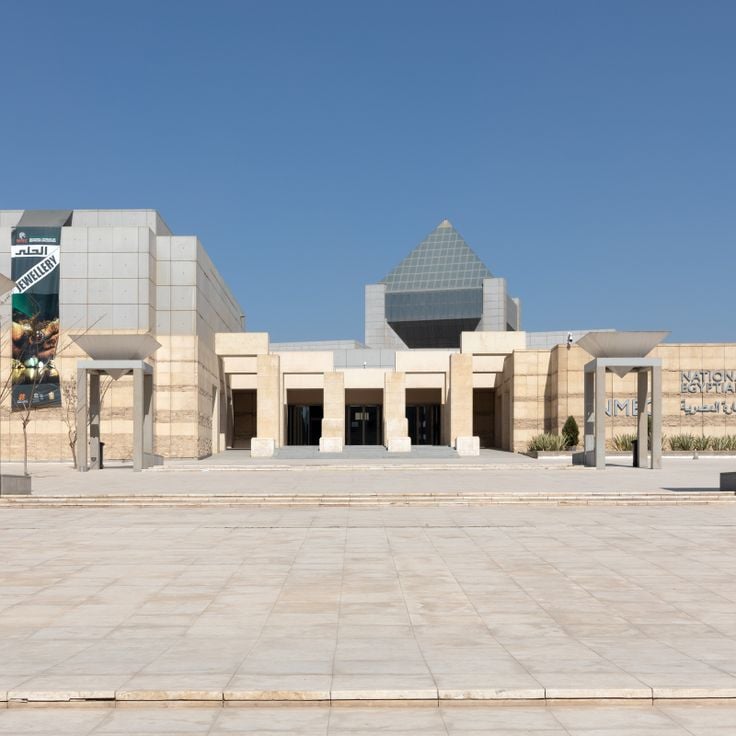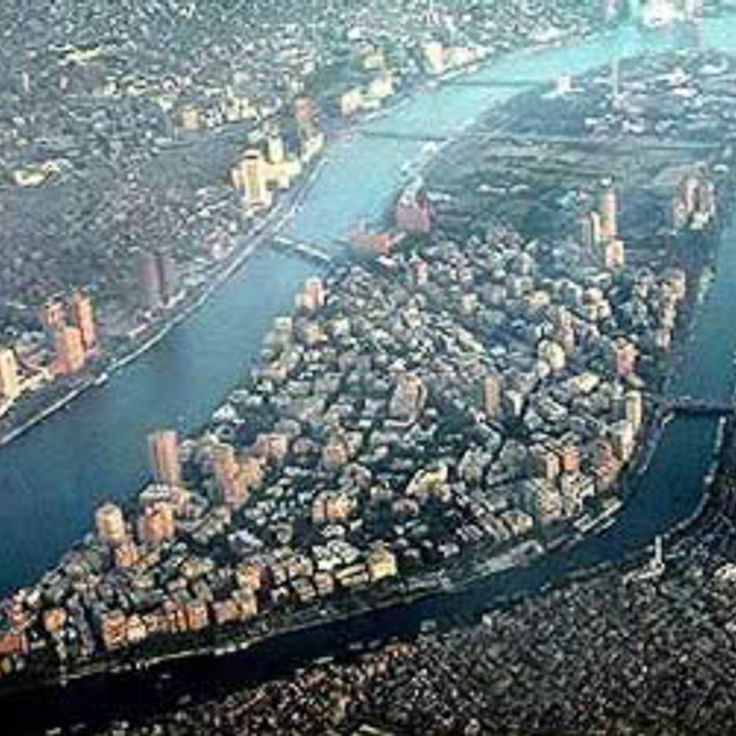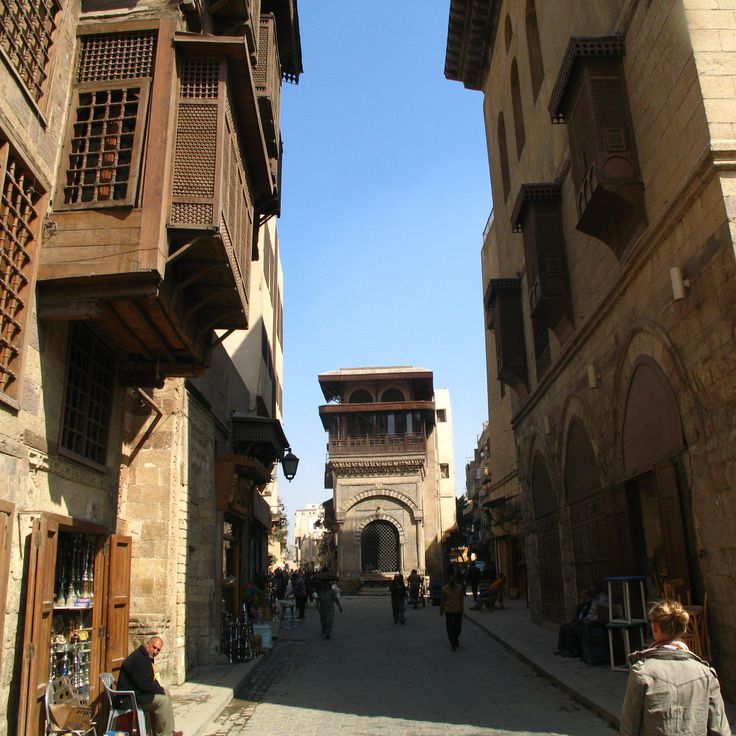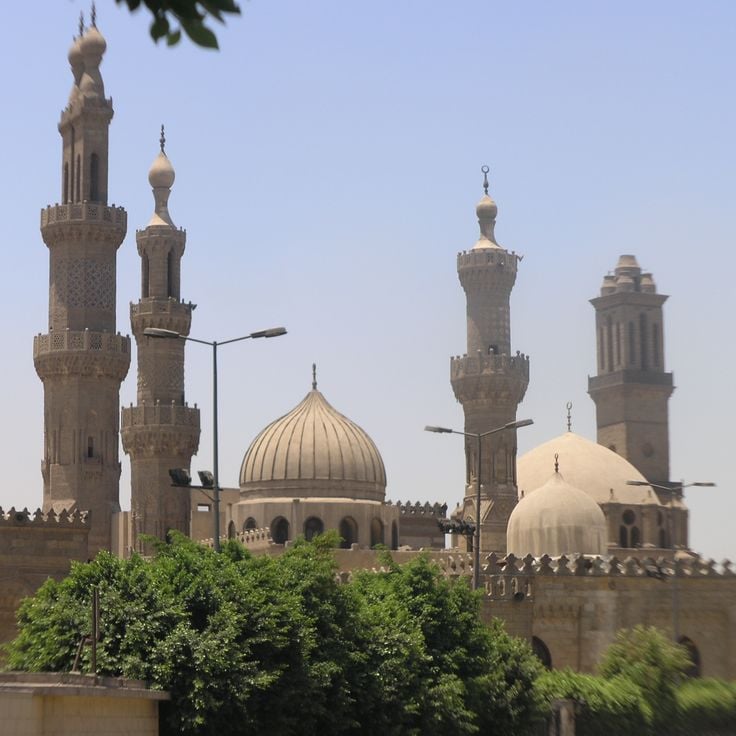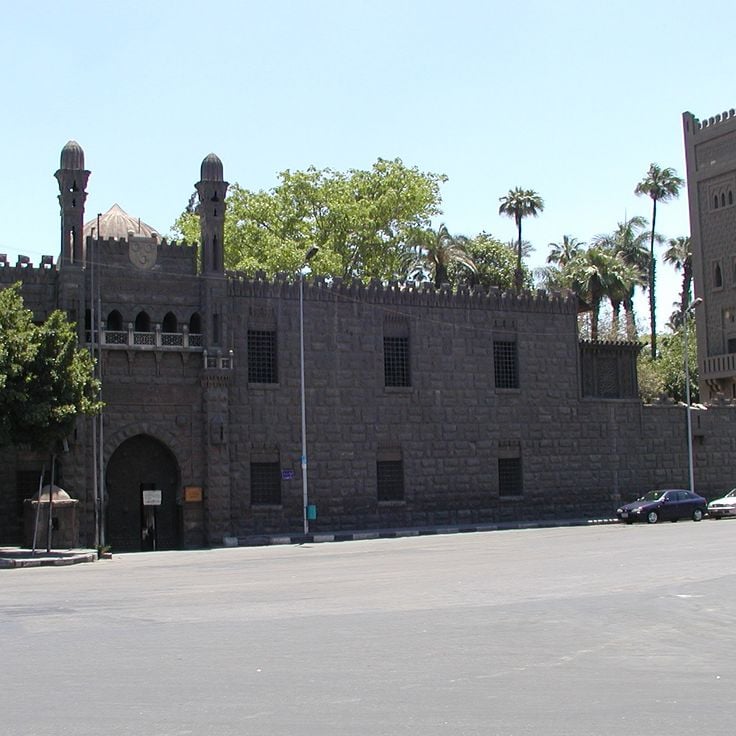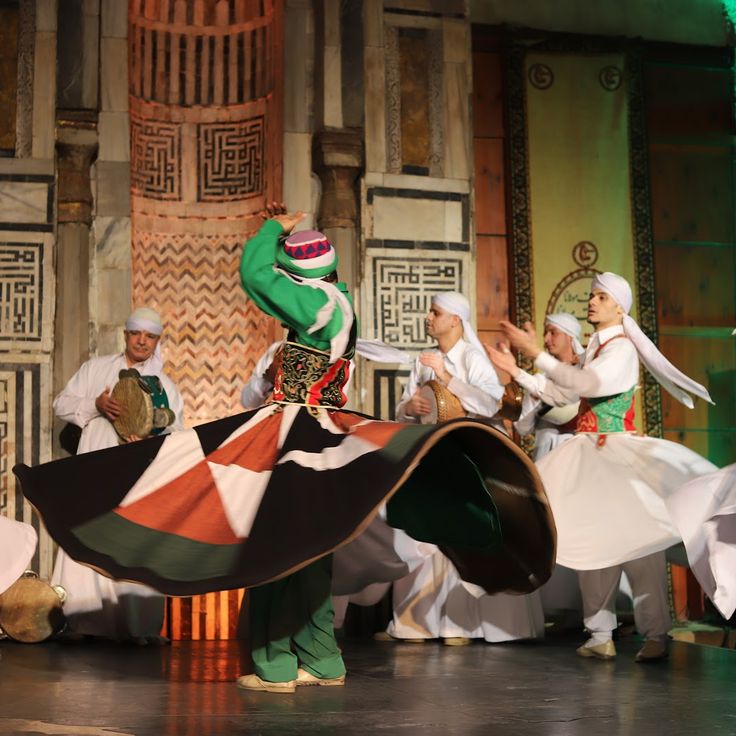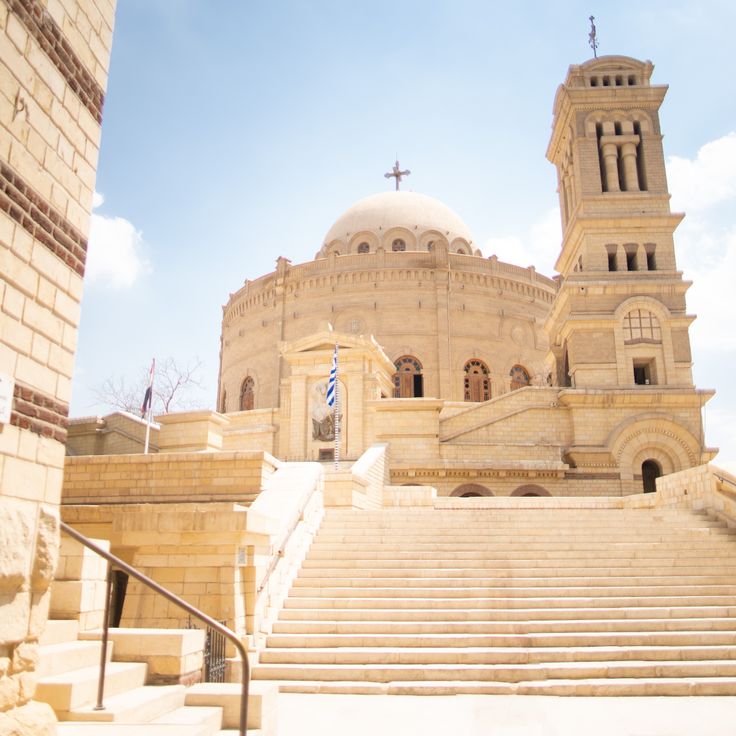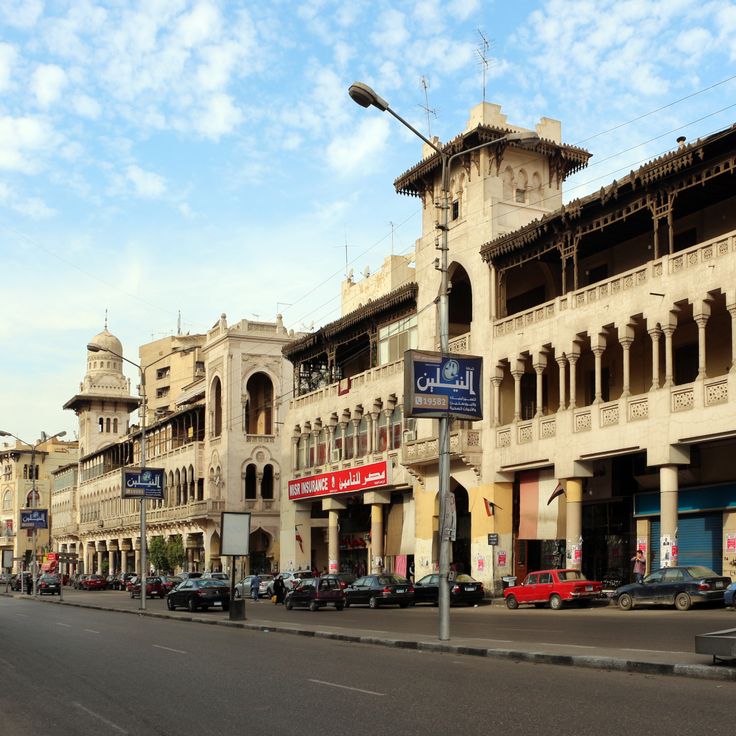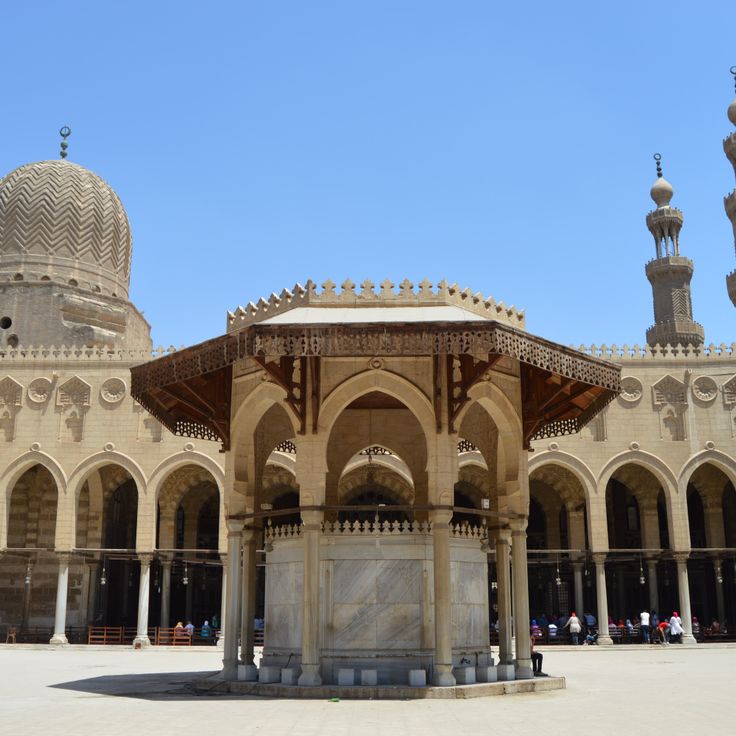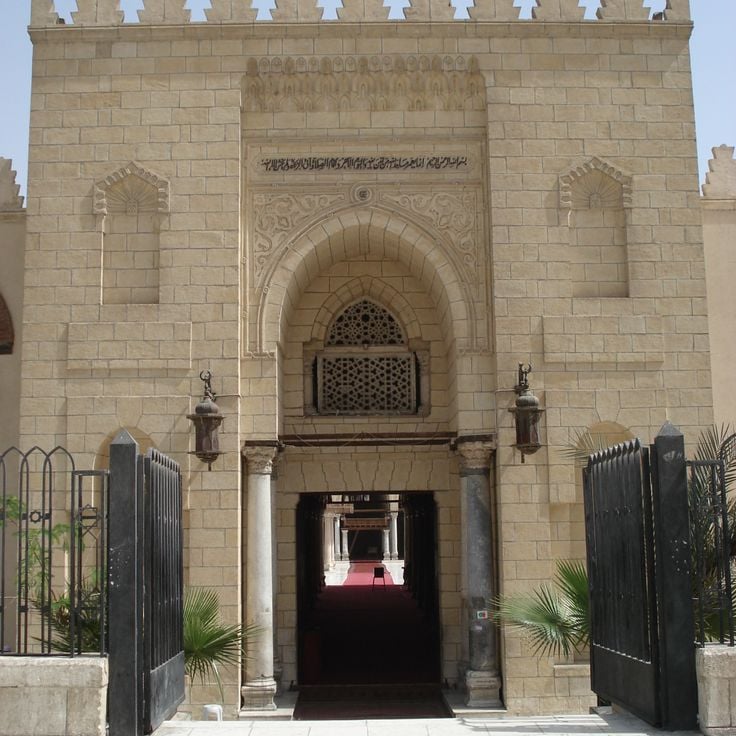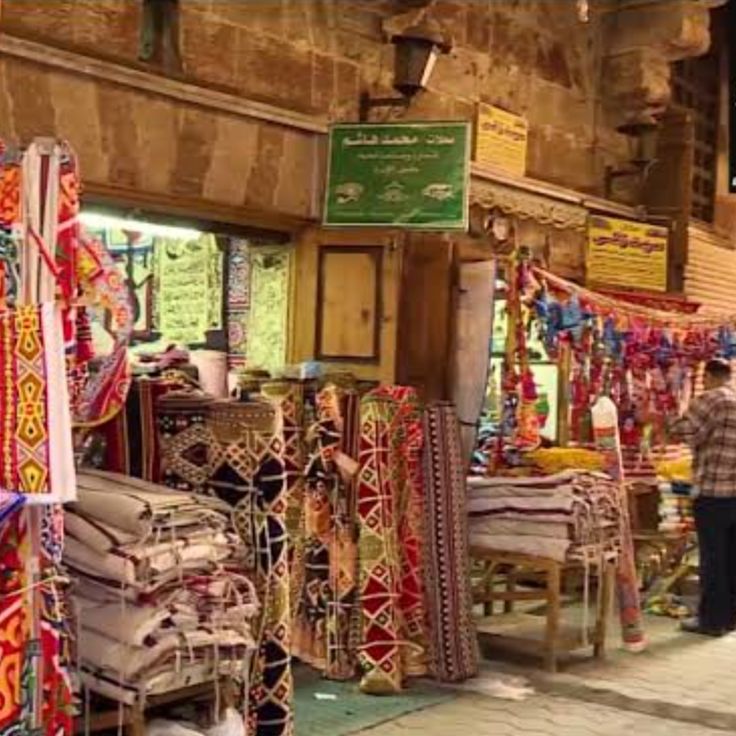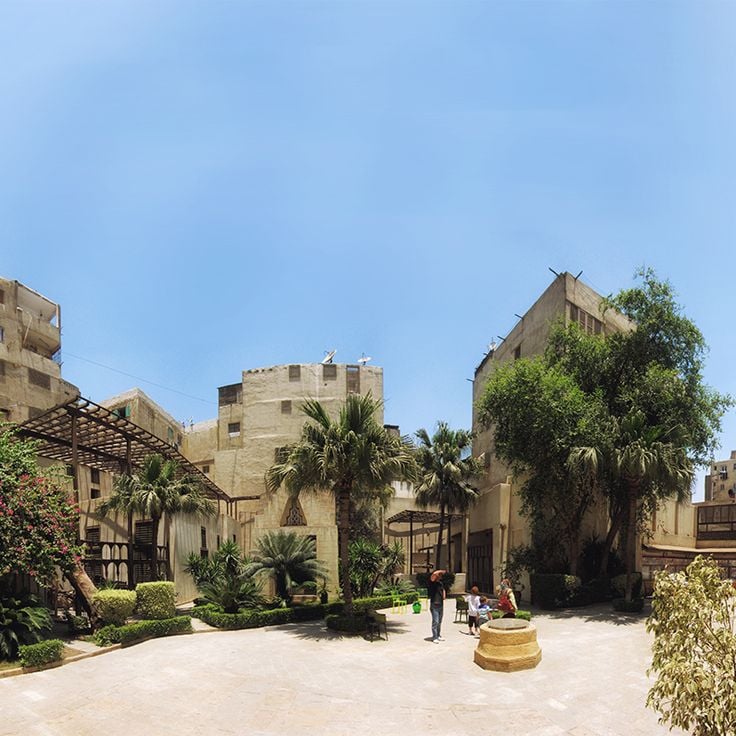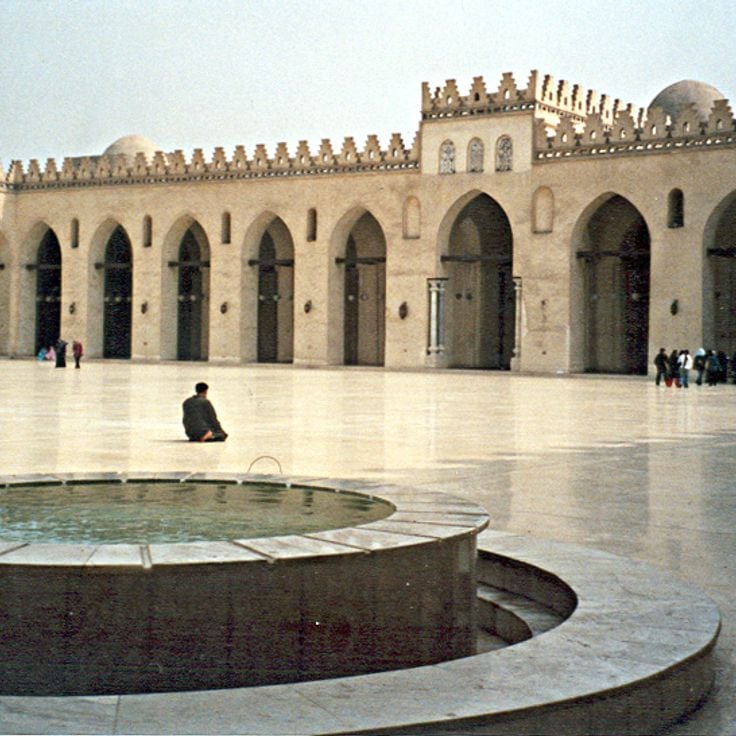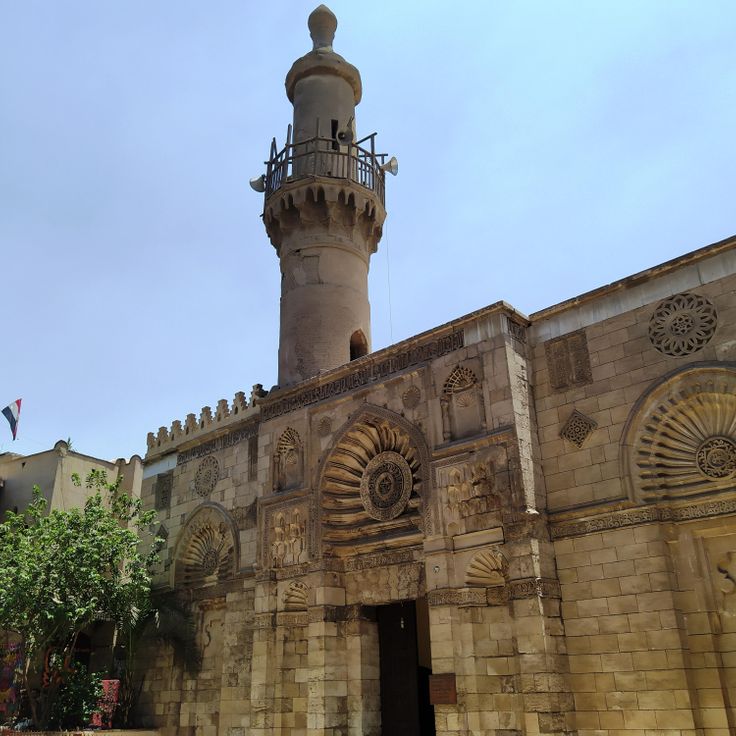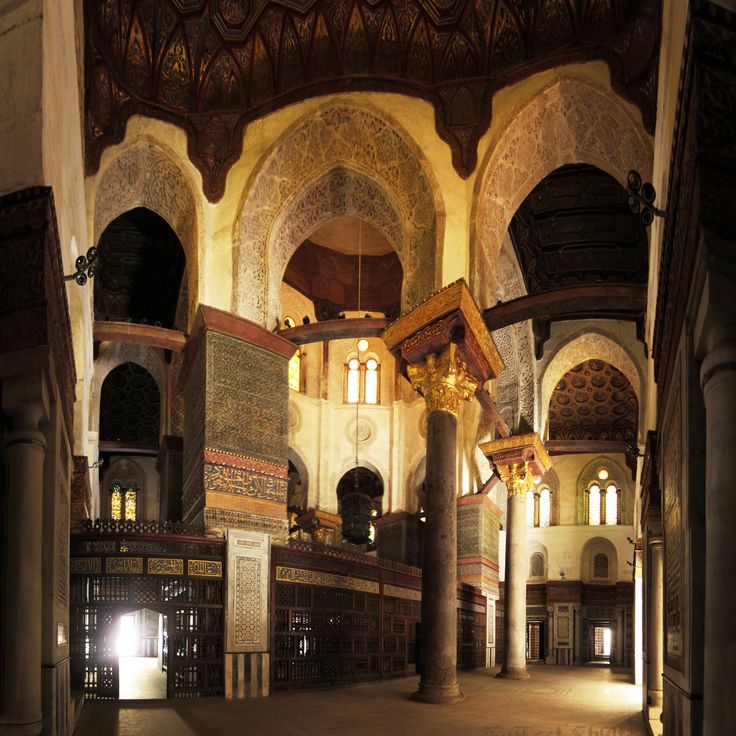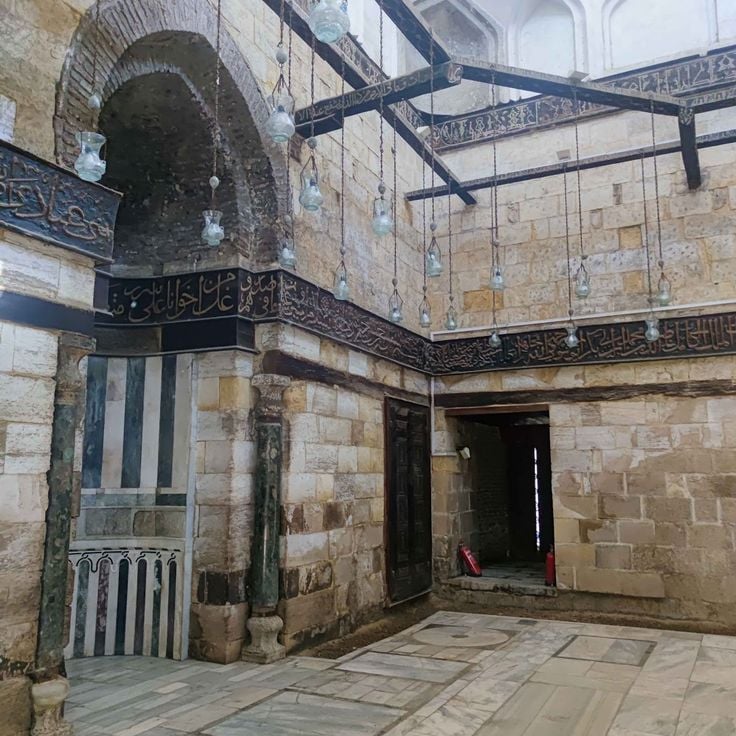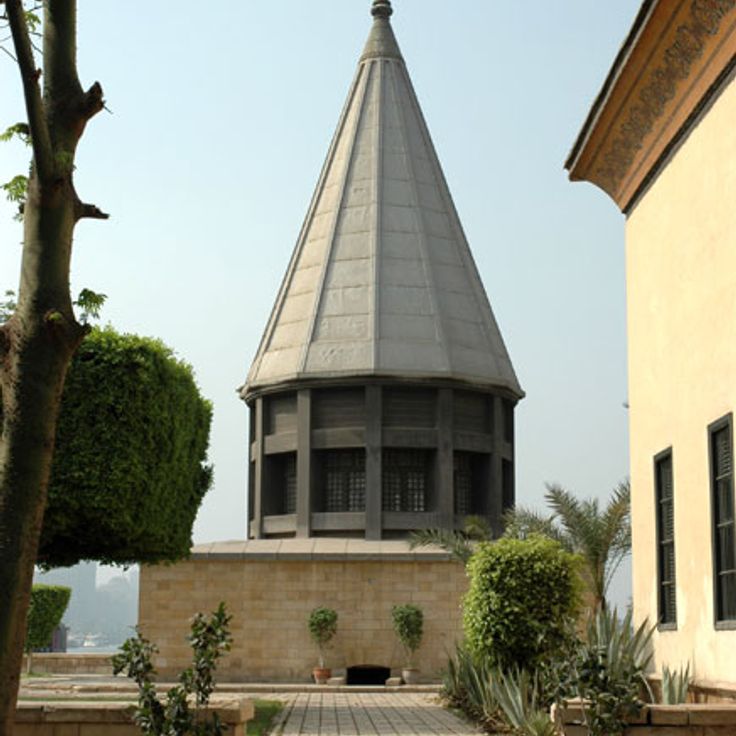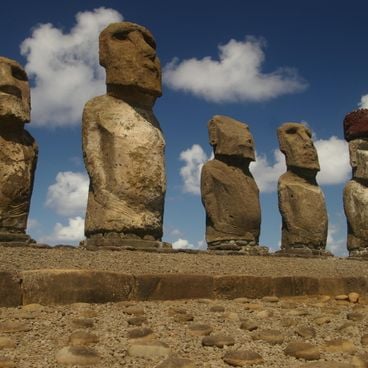Cairo is home to millennia of history. The Giza Pyramids, built between 2686 and 2494 BC, stand alongside Fatimid mosques like the Ibn Tulun Mosque from 879, and Mamluk fortifications such as Saladin's Citadel from the 12th century. Religious heritage reflects community diversity: Saint Serge Church dates to the 4th century, while Sainte-Marie Church from the 7th century reuses elements of the Roman fortress of Babylon. The Cairo Museum, opened in 1902, displays over 120,000 archaeological artifacts including Tutankhamun’s burial mask. Khan Al-Khalili market, established in 1382, continues traditional trade along its alleys lined with spice and craft shops. The Gayer Anderson House exemplifies 16th-century Ottoman residential architecture. These sites span Egypt’s history from pharaonic antiquity to the Ottoman period.
The Egyptian Museum Cairo opened in 1902 and houses more than 120,000 objects from the Pharaonic period. The collection includes statues, jewellery, papyri, sarcophagi and the golden funerary mask of Tutankhamun. This museum at Tahrir Square documents Egyptian history from the Predynastic period through the Greco-Roman era. As a repository of millennia of Egyptian civilization, this museum complements your exploration of Cairo's historical monuments, pyramids and mosques.
The Pyramids of Giza are central to Cairo's story, representing the oldest structures you will encounter in this city. This complex consists of three main pyramids built between 2686 and 2494 BC on a limestone plateau. They served as burial tombs for the pharaohs Khufu, Khafre, and Menkaure. These monuments reveal the engineering skill and organizational power of ancient Egypt.
Khan Al-Khalili Bazaar in Cairo stands as a monument to centuries of trade within this collection of historical sites. Established in 1382, this bazaar functions as a bustling center of commerce where narrow alleys connect shops selling spices, textiles, copper items and souvenirs. Traders here maintain centuries-old traditions, keeping alive the rhythm of exchange that has defined this marketplace since the medieval period.
The Ibn Tulun Mosque was built in 879 on a hill in Cairo and is one of the oldest surviving mosques in the city. This mosque features a minaret with a spiral external staircase that resembles Mesopotamian architecture. The spacious courtyard is surrounded by arcaded galleries supported by massive brick pillars. The mosque follows the classical plan of a courtyard mosque and is defined by simple geometric forms. As part of Cairo's collection of historical monuments, pyramids, and mosques, this Ibn Tulun Mosque connects the city's religious architecture to its long history spanning from pharaonic times to the Ottoman period.
The Church of Saint Mary was built in the 7th century on the foundations of the Roman fortress of Babylon. This Coptic place of worship incorporates reused ancient columns and capitals from the Roman period in its construction. It represents the religious diversity of Cairo and stands alongside other holy sites such as the Church of Saint Serge from the 4th century and the medieval mosques throughout the city.
The Citadel of Saladin was built in the 12th century on a hill and served as a military fortress and seat of government. This fortified complex houses several mosques, including the Alabaster Mosque of Muhammad Ali, as well as palaces and military museums. From the walls of the Citadel, visitors can see expansive views over Cairo and the surrounding districts. Within the context of this collection about Cairo's history, the Citadel of Saladin represents Mamluk fortress architecture and shows how military and administrative power continued from the 12th century into modern times.
The Gayer Anderson Museum consists of two connected houses from the 16th century that show how people lived in Ottoman Cairo. These residences have original wooden wall panels, mashrabiya window screens, and rooms filled with furniture and art objects from various Islamic regions. This museum fits within Cairo's broader history, spanning from ancient Egypt to the Ottoman period.
Al-Azhar Park was created in 2005 on the site of a former landfill and offers views of the historical monuments of Islamic Cairo. This green space complements a journey through Cairo's history, with walking paths, fountains and gardens that overlook the mosques and fortifications like Saladin's Citadel. The park provides a place to walk and relax for both visitors and residents.
The Church of Saints Serge and Bacchus in Cairo is part of Cairo's rich collection of monuments spanning thousands of years of history. This church dates from the 4th century and was constructed above a cave where, according to tradition, the Holy Family sought refuge during their journey to Egypt. The interior features several rows of marble columns that separate the nave from the side aisles. Beneath the sanctuary, a crypt leads down to the grotto, which now functions as a pilgrimage destination and offers visitors insight into early Christian practices.
Bab Zuweila is the southern gate of the Fatimid old city, constructed in 1092 under vizier Badr al-Jamali. The two minarets of the adjacent al-Muayyad Mosque were added to the gate towers in the 15th century. This monument stands as part of Cairo's vast historical heritage, spanning from pharaonic times through the Ottoman period, alongside pyramids, mosques, and other structures that reflect centuries of construction and tradition. From the top, visitors can look out over the historic center.
The Coptic Museum in this collection of Cairo's historical monuments preserves Christian art from Egypt spanning the 4th to the 19th century. The exhibition displays illuminated manuscripts, liturgical vestments, wooden carvings, icons, and liturgical objects. The museum documents the development of the Coptic Church and its artistic traditions across fifteen centuries.
These two mosques face each other on the same square and reveal the long story of Cairo. The Hassan Mosque was built in 1356 during the Mamluk era and is one of the largest mosques in the city. The Rifai Mosque was constructed between 1869 and 1912 in Mamluk style and houses the tomb of King Farouk along with other members of the Egyptian royal family. Together, these mosques show an important part of Cairo's religious architecture from medieval times to the modern period.
The Museum of Islamic Art in Cairo was founded in 1881 and displays works from different periods of Islamic civilization. It preserves illuminated manuscripts, historical textiles, decorated ceramics, and coins from Egypt and other regions of the Islamic world. The collection shows artistic and cultural development from the 7th century through the Ottoman period, complementing other historical sites in the city such as the mosques and fortifications that also reveal Cairo's rich past.
The Church of Saint Simon sits inside Mokattam Mountain in the garbage collectors' district. This prayer space was carved directly into the rock and holds several thousand worshippers. The walls show religious bas-reliefs depicting biblical scenes. The seating rows are cut into the natural stone. This Coptic Orthodox place of worship belongs to the Monastery of Saint Simon the Tanner and represents part of Cairo's religious heritage, standing alongside pharaonic monuments, Fatimid mosques, and Mamluk fortifications that span Egypt's history from ancient times to the Ottoman period.
The Cairo Tower was built in 1961 as a telecommunications structure and stands 187 meters tall. This tower houses a rotating restaurant and an observation deck that offers views across the Egyptian capital. The structure serves both technical functions and operates as a viewing platform for visitors exploring this city rich in historical monuments, pyramids, and mosques.
The Memphis Museum in Mit Rahina displays discoveries from ancient Egypt's former capital. At its center stands a recumbent limestone statue of Ramses II, roughly 10 meters long. The museum houses sphinxes, columns, and reliefs from the Old and Middle Kingdom periods. This site connects to Cairo's broader story, showing how Egyptian civilization developed from pharaonic times through later dynasties.
The National Museum of Egyptian Civilization displays over 50,000 objects from different periods of Egyptian history. The collection features a specialized gallery for royal mummies, where the remains of several pharaohs are shown. This museum complements the other historical sites throughout Cairo, such as the Giza Pyramids and mosques from the Fatimid and Mamluk periods, offering a broad view of Egypt's history from pharaonic times through the Ottoman era.
Zamalek is a residential neighborhood on Gezira Island in the Nile River that represents Cairo's modern cultural life. This district holds 19th-century buildings alongside the Egyptian National Opera House and numerous art galleries. Tree-lined streets contain restaurants, cafés, and cultural institutions that serve both residents and visitors. Within the context of Cairo's historical monuments, pyramids, and mosques, Zamalek offers a perspective on the city's cultural development beyond ancient times.
Al-Muizz Street is a medieval thoroughfare running through Cairo's historic center, stretching approximately one kilometer. It contains several mosques, madrasas, and buildings from the Mameluk era. This street shows how people lived in Cairo across different periods and connects visitors with various epochs of Egyptian history. It fits perfectly within the collection exploring Cairo's historical monuments from pharaonic antiquity to the Ottoman period.
The Al-Azhar Mosque was founded in 972 and houses the Islamic university of the same name. This mosque features a central courtyard surrounded by arcades and is topped by five minarets representing different architectural periods. Within Cairo's historical monuments, pyramids, and mosques, the Al-Azhar Mosque serves as a window into Egypt's religious and academic heritage spanning from the early medieval period to the present day.
The Manial Palace sits on Roda Island in the Nile and represents royal Cairo from the early 20th century. Built as a residence for Prince Mohammed Ali Tewfik, this complex contains five separate buildings that blend Ottoman, Persian, Moorish and European architectural styles. Tropical gardens with rare plants surround the palace grounds. Today the palace functions as a museum displaying royal furniture, artwork, manuscripts and personal possessions of the royal family.
The Baron Palace was built in 1911 as a private residence that combines Indian and Islamic architectural styles. This three-story building sits within a park in the Heliopolis district and was the home of Belgian industrialist Édouard Empain. The palace shows how wealthy families lived in early 20th century Cairo and adds to the city's story from pharaonic times through the modern period.
The Wekalet El Ghouri Center in Cairo occupies a caravanserai from the Mamluk period of the 16th century. This structure originally served as lodging for merchants and storage space for goods along trade routes. Today, the center regularly hosts cultural events, including dance performances and traditional music, showcasing Egypt's artistic heritage and providing visitors with insight into local performing arts.
The Ben Ezra Synagogue stands in Cairo among thousands of years of history. Built in 882 on the site of a Coptic church, this religious building houses a substantial collection of medieval Hebrew manuscripts known as the Geniza. These documents tell the story of the Jewish community in Egypt and reveal the religious diversity that shaped Cairo.
Saint George Church in Cairo is a 10th-century Coptic Orthodox place of worship built on the foundations of a Roman fortress. This church belongs to the collection of Cairo's historical monuments and religious sites that span thousands of years of history. The building's unusual circular architecture sets it apart from other places of worship in Old Cairo and reflects the religious diversity of the city alongside the Giza Pyramids, Fatimid mosques, and Mamluk fortifications.
The Heliopolis District was built between 1905 and 1922 as a planned city northeast of Cairo's historic center. Belgian industrialist Baron Empain designed this residential area following European models with geometrically laid-out streets, squares, and parks. This district shows the diversity of Cairo's history - while the Giza Pyramids date from antiquity and mosques like the Ibn Tulun Mosque from the 9th century preserve religious tradition, the Heliopolis District represents early 20th-century urban development with a mix of colonial, neoclassical, and Moorish architecture in the villas and residential buildings along wide, tree-lined avenues.
The Mu'ayyad Mosque represents Cairo's religious heritage from the 15th century. Sultan al-Mu'ayyad Shaykh built this structure between 1415 and 1421 after being imprisoned at this very location, where he had vowed to construct a place of worship. The mosque stands beside the historic Bab Zuweila gate in old Cairo and reflects the layers of spiritual life that shaped this city across centuries, from ancient pharaonic times through the Ottoman period.
The Amr ibn al-As Mosque was founded in 642 and is the oldest mosque in Egypt and on the African continent. This mosque marks the introduction of Islam to Egypt and originally served as a place of prayer for the Arab conquerors. As part of Cairo's rich historical collection spanning millennia of history, from the Pyramids of Giza to Mamluk fortifications, this structure reflects the city's religious heritage. Over the centuries, the mosque has been expanded and rebuilt multiple times, incorporating different Islamic architectural styles.
The Al-Khayamiya Market is a place where craftspeople create colorful fabrics and tents decorated with skillfully designed patterns. Artisans here use traditional textile techniques and apply each pattern by hand onto the fabrics. This ancient craft passes from one generation to the next and offers visitors a glimpse into the living culture of Cairo alongside the city's monumental treasures.
The Al-Suhaymi House was built in 1648 and demonstrates the characteristics of Ottoman residential architecture in Cairo. This residence belongs to the collection of historical monuments spanning Egypt's history from pharaonic antiquity to the Ottoman period. The house features an inner courtyard with fountains, and its rooms display geometric patterns along with carved woodwork on the walls. The design follows traditional principles of Ottoman domestic architecture and provides insight into how people lived during this era.
Al-Hakim Mosque is a major religious structure from Cairo's Fatimid period. Built between 990 and 1013 under Caliph Al-Hakim, this mosque displays characteristic Fatimid architecture with two minarets, a spacious courtyard, and a prayer hall. As part of Cairo's historical heritage alongside the Giza Pyramids, the Ibn Tulun Mosque, and Saladin's Citadel, this building represents the religious traditions and diversity that have shaped the city from ancient Egypt through the Ottoman period.
The Al-Aqmar Mosque was built in 1125 under Fatimid caliph al-Amir bi-Ahkam Allah. Its carved stone façade displays geometric patterns and engraved Quranic verses. This mosque shows how Fatimid builders combined religious purpose with decorative craft, fitting within Cairo's long history that spans from ancient pharaohs to Ottoman times.
The Qalawun Complex is a 13th-century monument in Cairo's historic quarter. Sultan al-Mansur Qalawun built this ensemble, which brings together a mosque, a mausoleum, and a hospital. The complex shows how the Mamluks constructed their buildings and how they combined religious, charitable, and medical functions in one place. It stands among the sites that tell Cairo's story from ancient Egypt through the Ottoman period.
The Madrasa as-Salihiyya fits naturally into this collection of Cairo's historical monuments because it shows the religious and educational fabric of the city. Built in 1249 by Sultan Salih Najm ad-Din Ayyub in central Cairo, this madrasa served as a learning center where students studied Islamic sciences, theology, and law. Prayer areas were integrated into the building, reflecting how education and worship existed side by side. The madrasa exemplifies Mamluk architectural craftsmanship and stands near the Sultan Hassan Mosque, connecting it to the broader network of religious structures that shaped Cairo's character across centuries.
This Nilometer was built in 861 on Rhoda Island to measure the annual Nile floods. The construction consists of a graduated well with Kufic inscriptions on its walls containing Quranic verses and construction information. This structure is part of Cairo's rich history spanning from pharaonic antiquity to the Ottoman period.

